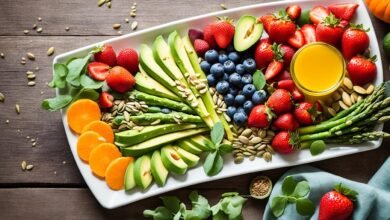The Low FODMAP diet has emerged as a transformative dietary strategy for individuals grappling with gastrointestinal distress, particularly those diagnosed with Irritable Bowel Syndrome (IBS) and other related conditions. In this comprehensive article, we will provide a meticulous breakdown of the foods to include and exclude when embarking on the Low FODMAP Diet, a diet meticulously designed to minimize the symptoms associated with FODMAP intolerance.
Demystifying FODMAPs
To comprehend the Low FODMAP Diet fully, it’s essential to grasp the nature of FODMAPs. FODMAPs, the acronym for Fermentable Oligosaccharides, Disaccharides, Monosaccharides, and Polyols, encompass a group of fermentable carbohydrates present in a diverse array of foods. These compounds often resist absorption in the small intestine, subsequently fermenting in the colon, which can result in a spectrum of digestive discomfort and disturbances, particularly in individuals with FODMAP sensitivity.
Foods to Embrace in the Low FODMAP Diet
- Lean Proteins: The Low FODMAP Diet warmly welcomes lean protein sources such as poultry, fish, and tofu, representing the dietary cornerstones of protein intake that are highly tolerable.
- Low FODMAP Vegetables: The diet encourages the inclusion of an assortment of vegetables that are considered low in FODMAPs. These include but are not limited to spinach, carrots, zucchini, and bell peppers, all of which add both nutritional value and vibrant color to meals.
- Select Fruits: While the diet restricts certain high-FODMAP fruits, it permits the consumption of FODMAP-friendly alternatives like bananas, blueberries, and strawberries in moderation.
- Grain Selection: Rice, oats, and gluten-free grains such as quinoa and polenta are considered safe choices for those faithfully adhering to the Low FODMAP diet.
- Dairy Replacements: Lactose-free dairy products, like lactose-free milk and hard cheeses, offer rich alternatives to their FODMAP-laden counterparts. Furthermore, those seeking non-dairy options can explore almond, rice, or lactose-free yogurt for an equally delectable experience.
- Fats and Oils: The Low FODMAP Diet places no restrictions on most fats and oils, enabling their liberal usage in cooking and dressing.
Foods to Omit in the Low FODMAP Diet
- High FODMAP Fruits: High-FODMAP fruits such as apples, pears, cherries, and watermelon are to be scrupulously avoided, given their capacity to incite gastrointestinal discomfort.
- High FODMAP Vegetables: Among the exclusion list are vegetables such as onions, garlic, mushrooms, and cauliflower, owing to their elevated FODMAP content and consequent digestive distress.
- Legumes: Lentils, chickpeas, and the majority of beans, while known for their nutritional value, contain FODMAP levels deemed unsuitable for those pursuing a Low FODMAP regimen.
- Wheat-Based Products: Traditional wheat-based staples including bread, pasta, and many cereals, must be substituted with gluten-free alternatives to adhere to the Low FODMAP Diet.
- Dairy Constraints: Conventional dairy products like milk, soft cheeses, and yogurt, marked by their lactose content, are advised against. Favor lactose-free options or embrace the diverse spectrum of non-dairy alternatives available.
- Cautious Sweeteners: To prevent the potential gastrointestinal unrest, sugar substitutes like sorbitol, mannitol, and xylitol, commonly found in sugar-free gum and candies, should be judiciously avoided.
In summary, The Low FODMAP Diet is, when implemented with precision, a life-changing approach for individuals grappling with the burden of digestive discomfort. A comprehensive grasp of what to include and exclude is pivotal in successfully managing symptoms connected to FODMAP intolerance. To commence this dietary odyssey, the guidance of a healthcare professional or a registered dietitian is unequivocally recommended, ensuring an individualized and precise approach. By making informed and discerning dietary choices, individuals can pave the path towards an existence characterized by digestive well-being, unveiling the potential for an elevated quality of life.



